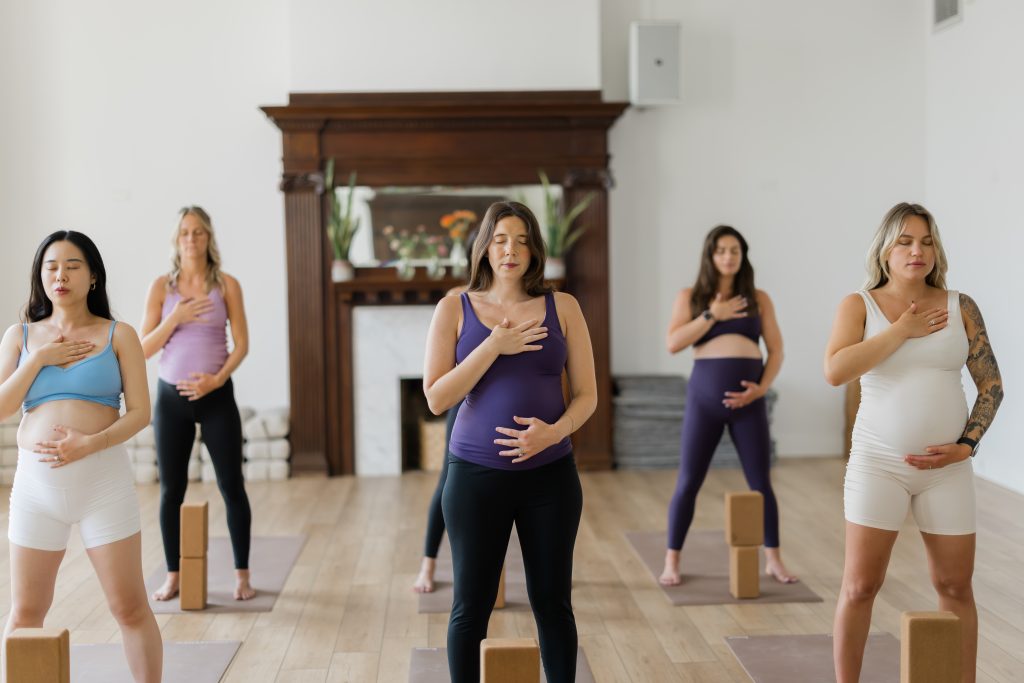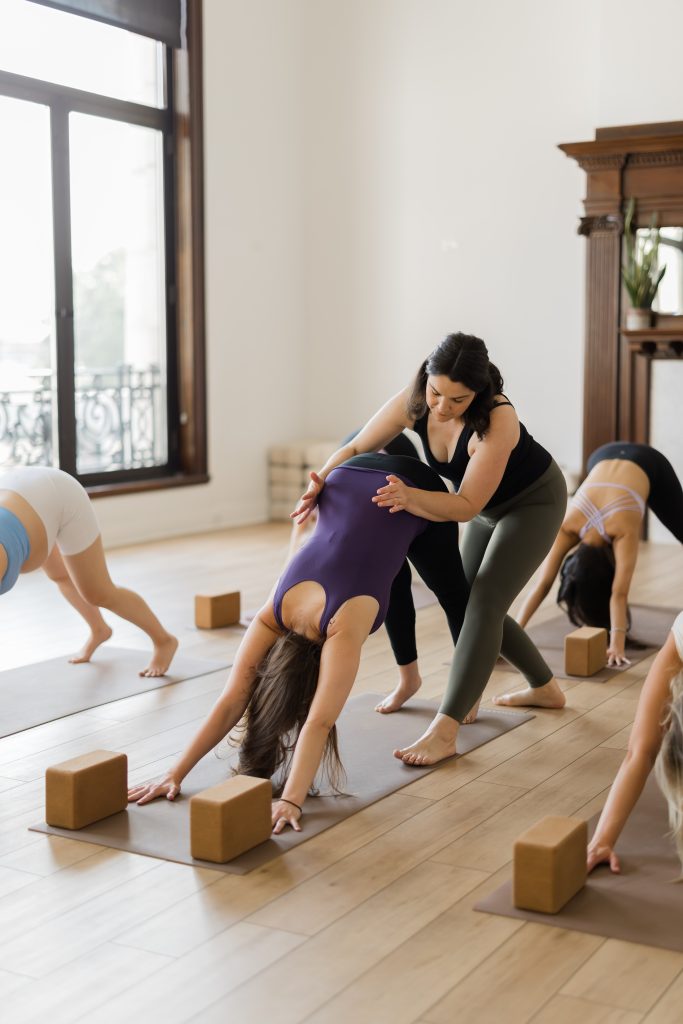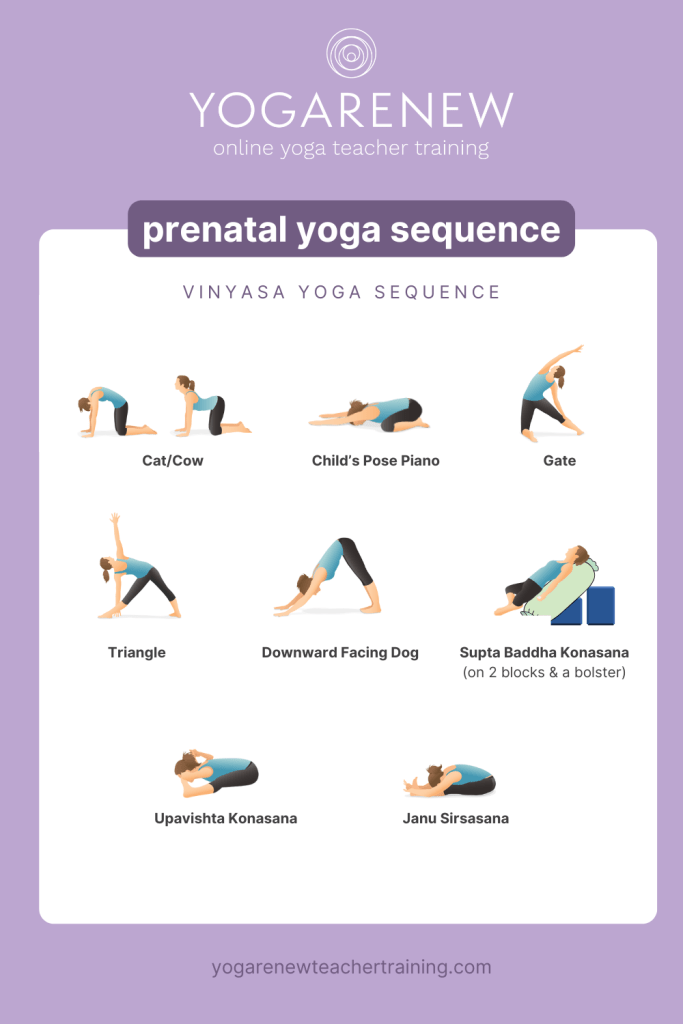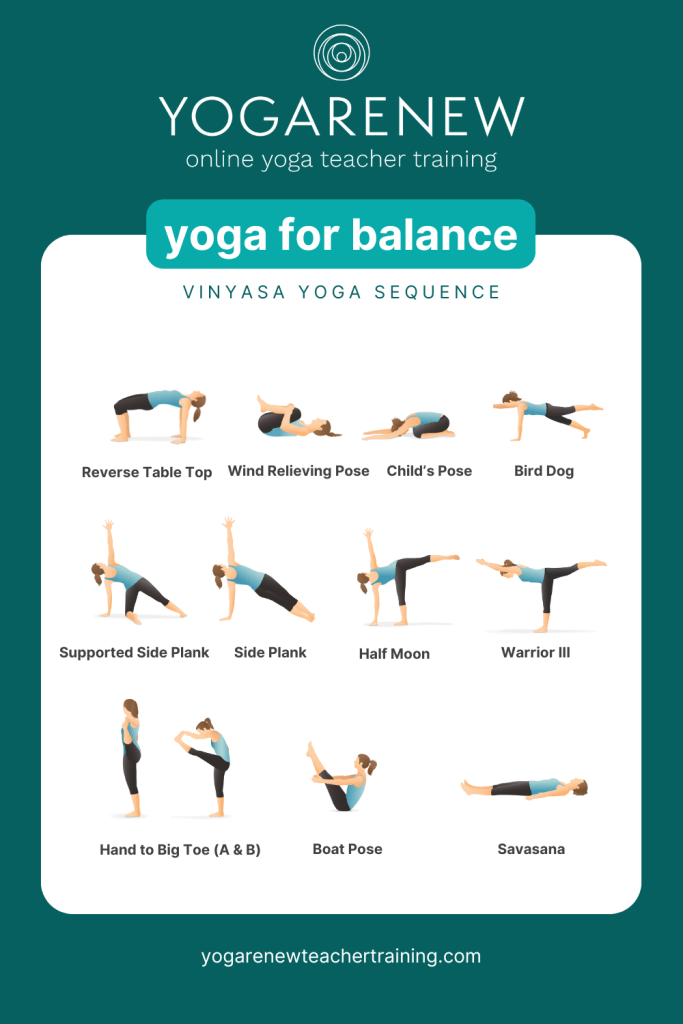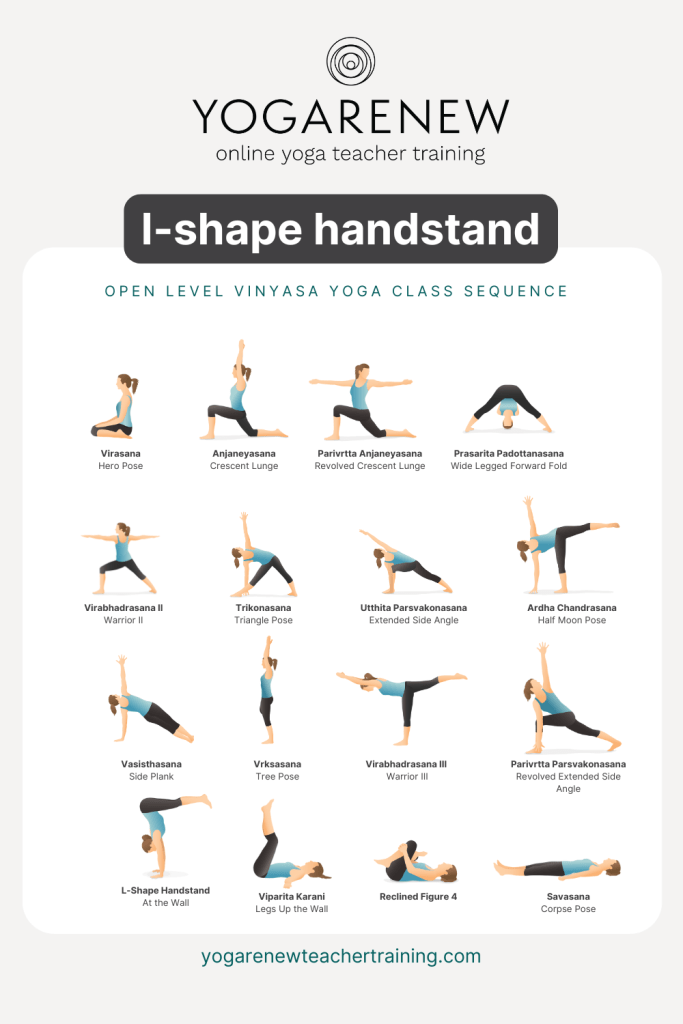
Today we’re gradually building toward a strength-building peak, L‑Shape Handstand. This open level vinyasa yoga class to L-Shape Handstand will allow your students to invert with length, lift, and proper alignment, using the support of the wall. To get there, we’ll focus on asanas that lengthen the sides of the body and promotes straight arms and legs for added stability.
Puttering
- Virasana (Hero Pose)
- Anjaneyasana (Crescent Lunge) — both sides
- Revolved Crescent Lunge
- Prasarita Padottanasana (Wide‑Legged Forward Fold)
Sun Salutations
- 2-3 Rounds focusing on straightening the front leg in the low lunge portion
Open Hip Standing Flow
- Warrior II
- Trikonasana (Triangle Pose)
- Extended Side Angle
- Half Moon (Ardha Chandrasana)
- Side Plank (Vasisthasana)
Balance & Strength
- Tree Pose (Vrksasana)
- Warrior III
Twists & Peak Pose
- Revolved Extended Side Angle
Step back into a lunging stance from Warrior III. Extend one of your arms up by your ear and twist over your opposite knee, hooking your elbow outside of your knee. Twist as you find prayer hands. Continue to breathe as you twist deeper, offering the option to fly open the arms, letting one palm reach down to the floor and the other extended up overhead, palm facing down. - L‑Shape Handstand at the Wall
Set‑up: Face the wall sitting on your butt. Measure the distance of your feet from the wall with blocks by placing the blocks by your hips. Flip yourself over and come to a shortened down dog with straight arms and legs. Walk one foot up, then the other, until legs form an “L”: hips stacked over shoulders, feet pressing firmly into the wall.
Hold: Find length in your arms, shoulder blades hugging the sides. Broaden through your chest, keep navel drawing in, legs active. Stay 5–10 breaths.
Variations: Practice kicking one leg off the wall for little pulses or lifts if you like. Use the other leg for stability.
Wind Down
- Reclined Figure‑4
Slowly come away from the wall, lie on your back. Cross ankle over opposite thigh, flex that foot, and hug your legs in. Feel a release through the hips and glutes. - Legs Up the Wall (Viparita Karani)
Scoot your seat toward the wall. Stretch your legs straight up—feet relaxed. Close your eyes. Soften your belly. Breathe and let the hamstrings ease out. - Savasana
Slide away from the wall and fully release. Let your body melt into the mat. Stay here for at least 5 minutes. Notice how the energy flows through your body now that you’ve practiced inversion and extension with awareness.
Practice with us!
Thanks for practicing with us! If you enjoy sequences like this one, be sure to follow us on Instagram and YouTube to see these type of classes in action. And as always, if you’re looking to deepen your yoga education or your own personal practice, check out our online yoga teacher training courses and download the YogaRenew app!


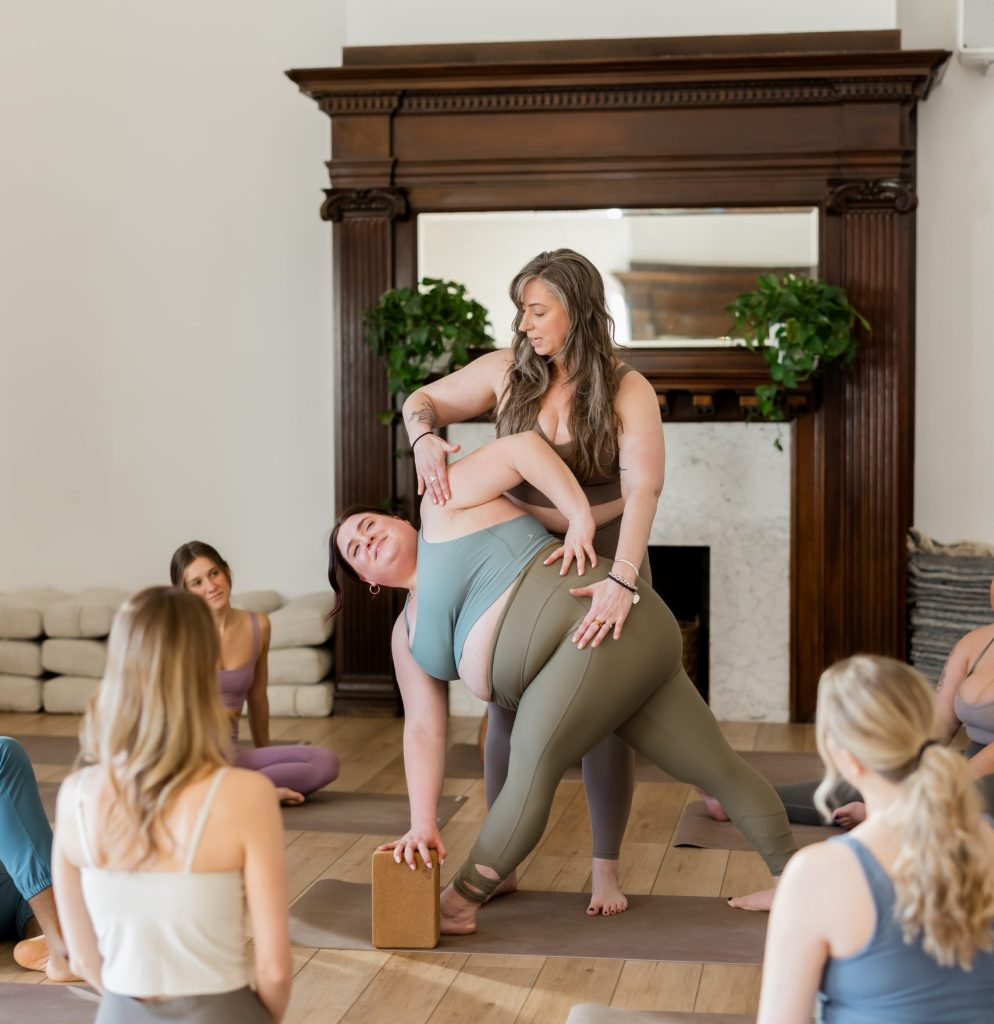
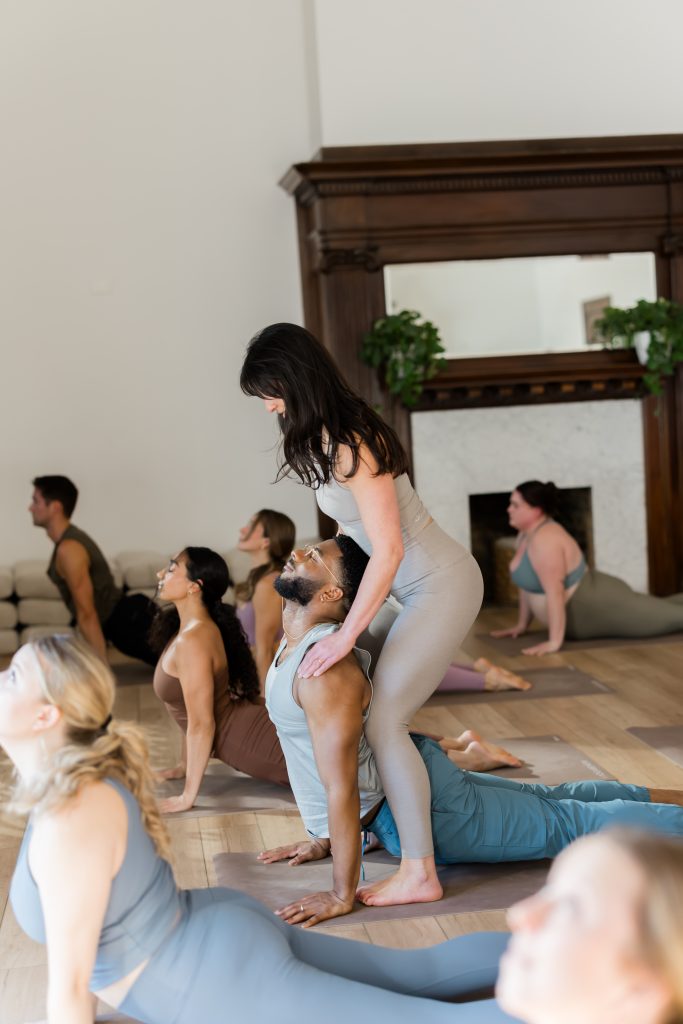
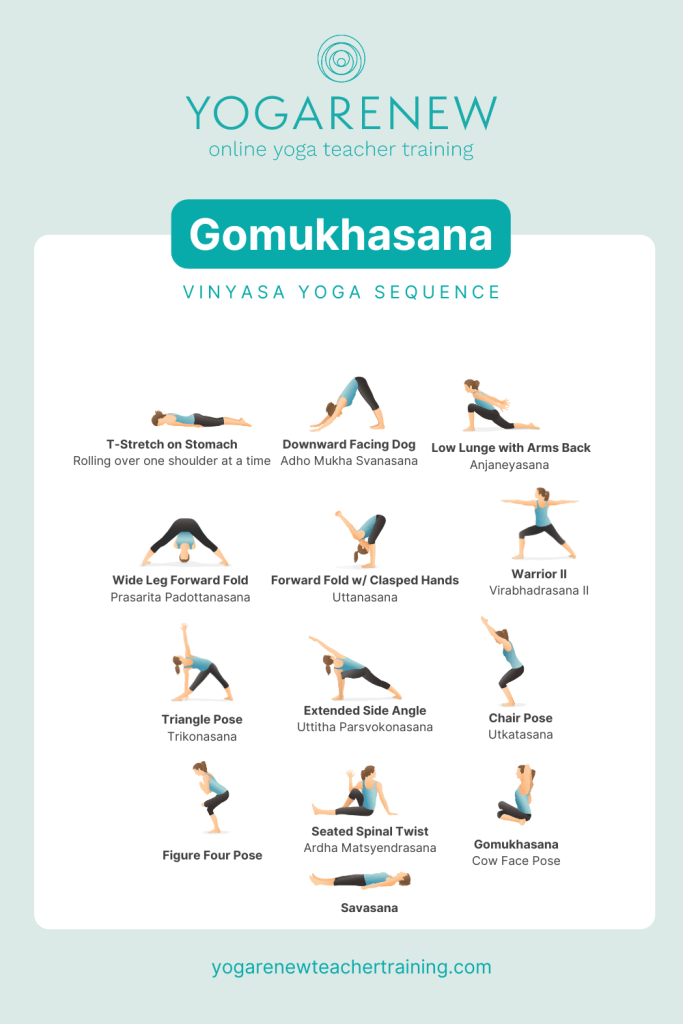
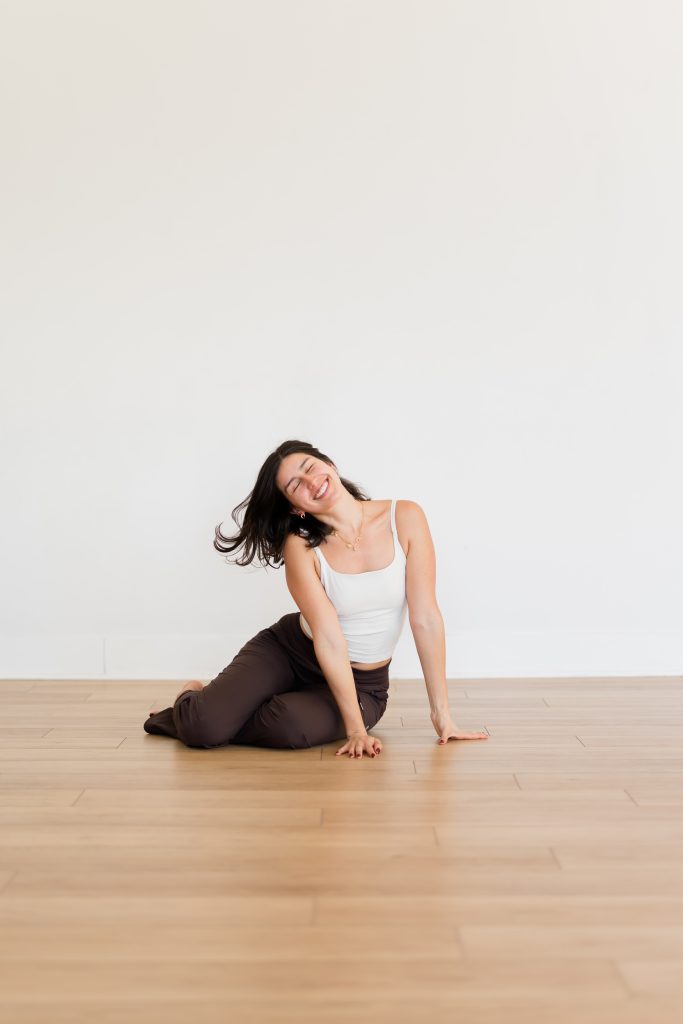

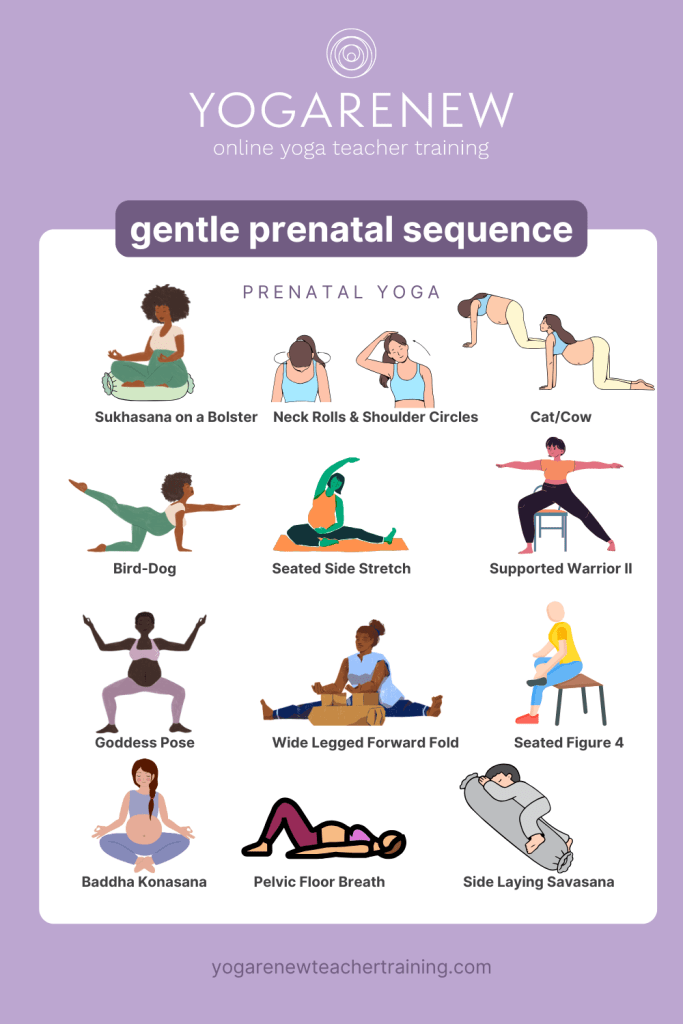
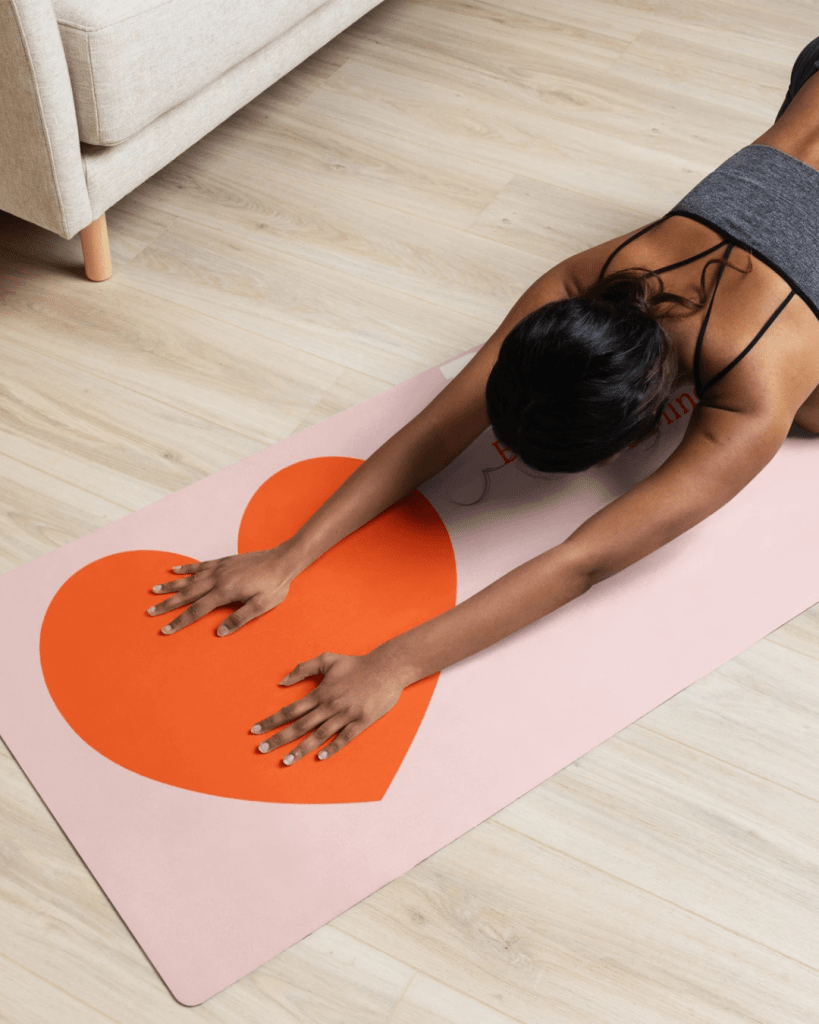
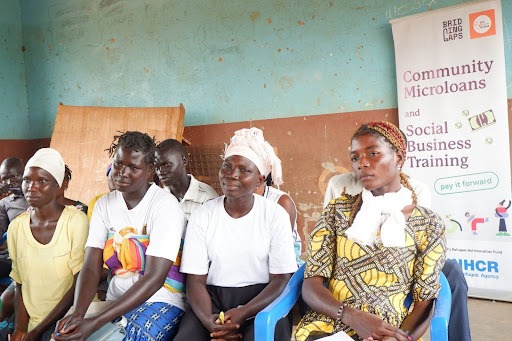 One of the many things that deeply resonated with me is the exploration of yoga philosophy, especially karma yoga. In Mark Stephens’ Teaching Yoga, he defines karma yoga as “the yoga of service,” literally translated as the path of “union through action.” He writes that it involves acting without consideration of desire or selfish need—and that idea really stayed with me. Years ago, I spent time at a yoga retreat where karma yoga meant helping in the kitchen or sweeping floors. Today, learning more about it, I expanded my definition of it to bringing microfinance to refugee settlements, co-creating community-based programs, and holding space for others to lead.
One of the many things that deeply resonated with me is the exploration of yoga philosophy, especially karma yoga. In Mark Stephens’ Teaching Yoga, he defines karma yoga as “the yoga of service,” literally translated as the path of “union through action.” He writes that it involves acting without consideration of desire or selfish need—and that idea really stayed with me. Years ago, I spent time at a yoga retreat where karma yoga meant helping in the kitchen or sweeping floors. Today, learning more about it, I expanded my definition of it to bringing microfinance to refugee settlements, co-creating community-based programs, and holding space for others to lead.
